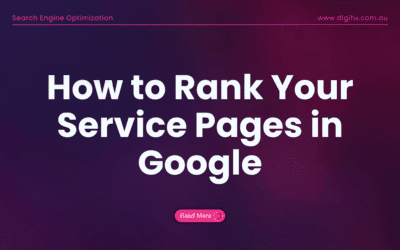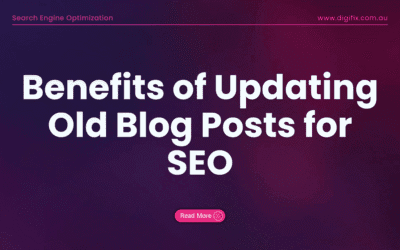If you own a website in Australia, you know how vital search engine optimisation (SEO) is. A big part of SEO is making sure your site is easy to use. Google’s Core Web Vitals are now key in checking how well your site works and its ranking. In this blog, learn how to improve core web vitals for better rankings.
Boosting your Core Web Vitals can really help your site show up more online. Google says Core Web Vitals measure how well a page works for users. By making these better, you can make your site work better and rank higher in search engines.
Key Takeaways
- Understanding Core Web Vitals is crucial for SEO success.
- Optimising Largest Contentful Paint (LCP) improves loading times.
- Enhancing Interaction To Next Paint (INP) boosts user interactivity.
- Reducing Cumulative Layout Shift (CLS) enhances visual stability.
- Utilising tools like Google Search Console helps in monitoring Core Web Vitals.
Understanding Core Web Vitals and Their Impact on SEO
Improving your website’s search engine rankings is key. Knowing about Core Web Vitals is essential. These metrics, from Google, check how well your site works for users. They look at how fast your site loads, how interactive it is, and how stable it looks.
What Are Core Web Vitals?
Core Web Vitals are part of Google’s Web Vitals. They focus on the user experience on your site. The three main areas they check are:
- Largest Contentful Paint (LCP): Measures loading performance.
- First Input Delay (FID): Assesses interactivity.
- Cumulative Layout Shift (CLS): Evaluates visual stability.
These metrics help you see how users interact with your site. They show you where you can make things better.
Why Core Web Vitals Matter for Australian Websites
In Australia, making your website fast and smooth is crucial. With lots of people online, a good user experience is key. By improving your Core Web Vitals, your site will work better. This can lead to more people visiting your site and better rankings in search engines.
The Business Benefits of Optimised Core Web Vitals
Improving your Core Web Vitals can help your business a lot. Here are some benefits:
- Users will have a better experience, leading to more engagement and sales.
- Your site will rank higher in search engines, bringing in more visitors.
- Your brand will look better because a fast site shows you care about quality.
By focusing on Core Web Vitals, you make your site better for users. This can help your business grow.
Measuring Your Current Core Web Vitals Performance
First, you need to know how your website’s Core Web Vitals are doing. DigiFix, a top digital marketing agency in Australia, helps businesses improve. They focus on key metrics to achieve success.
Essential Tools for Monitoring Core Web Vitals
To check your website’s Core Web Vitals, you need the right tools. Google’s PageSpeed Insights and the Core Web Vitals report in Google Search Console are key. They show how well your site is doing and where it can get better, like LCP optimization and FID enhancements.
Tools like WebPageTest and Lighthouse also help. They do deep checks and suggest ways to get better. With these tools, you can really understand what’s working and what’s not.
Interpreting Your Core Web Vitals Reports
After getting data on your Core Web Vitals, it’s important to understand the reports. Look at metrics like Largest Contentful Paint (LCP), First Input Delay (FID), and Cumulative Layout Shift (CLS). Knowing these helps you see where to focus, like making your site more mobile-friendly.
For example, a high LCP score means your main content loads slowly. A high CLS score means your layout shifts a lot. By looking at these, you can make a plan to make your site better.
Setting Realistic Improvement Benchmarks for Australian Websites
Setting goals that are realistic is key to tracking your progress. For Australian sites, think about the local internet and how people use it. Setting goals that are reachable helps you keep moving forward.
For instance, you might want to cut your LCP by 20% in three months or lower your CLS by 30% in six months. Having clear goals lets you see how you’re doing and change your plan if needed.
How to Improve Core Web Vitals for Better Rankings
To make your website better and rank higher in search engines, focus on Core Web Vitals. These metrics check how fast your site loads, how interactive it is, and how stable it looks. By improving these areas, you can make your site more user-friendly and rank higher.
Optimising Largest Contentful Paint (LCP)
Largest Contentful Paint (LCP) looks at how long it takes for the biggest part of your site to show up. To improve LCP, work on making your site’s biggest elements load faster. This includes optimising images, using browser caching, and avoiding resources that slow down your site.
For example, shrinking images can make them load quicker. Tools like TinyPNG or ImageOptim can do this without losing quality. Also, using a content delivery network (CDN) can make your site faster by getting your content closer to visitors.
Enhancing First Input Delay (FID)
First Input Delay (FID) checks how quickly your site responds to the first thing a user does, like clicking a button. To better FID, make your site more interactive by minimising JavaScript files and improving your main thread. Loading JavaScript only when needed can help a lot.
It’s also important to avoid tasks that slow down your site. Break down big tasks into smaller ones to keep your site fast. For more on how speed affects SEO, check out DigiFix’s article on the topic.
Reducing Cumulative Layout Shift (CLS)
Cumulative Layout Shift (CLS) looks at how stable your site’s layout is. To lower CLS, make sure to reserve space for dynamic content and avoid animations that move things around. Setting fixed sizes for images and videos can also help.
By working on these areas, you’ll not only improve your Core Web Vitals but also make your site better for users. Focus on cls improvements and follow SEO best practices to boost your site’s performance. Book a free consultation with DigiFix to learn more about optimising your site and improving your rankings.
Common Mistakes to Avoid When Optimising Core Web Vitals
When you’re working on improving your website’s Core Web Vitals, it’s important to know what to avoid. Making your site better for users and faster to load is key. But, there are traps that can slow you down.
Overlooking Mobile Performance
Many people use mobile devices to visit websites. So, making sure your site works well on mobile is crucial. If you ignore mobile performance, your site’s user experience and rankings can suffer.
- Ensure your website is mobile-friendly and responsive.
- Test your site’s mobile performance regularly.
- Optimise images and content for mobile devices.
Neglecting Regular Performance Monitoring
It’s vital to keep an eye on how your website performs. If you don’t, you might miss problems that affect your Core Web Vitals.
- Use tools like Google PageSpeed Insights to monitor performance.
- Set up regular audits to catch potential issues early.
- Adjust your optimisation strategy based on monitoring results.
Implementing Quick Fixes Without Strategic Planning
Quick fixes might seem like a simple solution. But, they often lack the long-term planning needed for success. Making changes without a plan can cause more problems later.
For expert advice on improving your website’s Core Web Vitals, contact DigiFix. They’re at 18 Cambria Road, Keysborough, VIC 3173, or [email protected], or +61 3 8669 1773.
Ignoring Australia-Specific Performance Factors
Factors specific to Australia, like server location and local network conditions, can affect your site’s performance. If you ignore these, your Core Web Vitals might not be as good as they could be.
- Consider using a content delivery network (CDN) to improve page loading speed.
- Optimise your website for local search by including region-specific keywords.
- Ensure your hosting solution is reliable and suited to your local audience’s needs.
Conclusion
Now you see how important Core Web Vitals are for your website’s SEO. To boost your rankings, keep an eye on your site’s performance. Use tools like Google PageSpeed Insights and Google Search Console to check your Largest Contentful Paint (LCP), First Input Delay (FID), and Cumulative Layout Shift (CLS).
With the tips from this article and good SEO practices, you can make your website better. This will help your search engine rankings and make your site more user-friendly. DigiFix is here to help improve your online presence, starting with Core Web Vitals.
Keep working on your website’s performance. Remember, it’s important to keep checking and improving to stay ahead in Australia’s digital world.
FAQ
What are the most important Core Web Vitals metrics for SEO?
The key Core Web Vitals for SEO are Largest Contentful Paint (LCP), First Input Delay (FID), and Cumulative Layout Shift (CLS). They affect how users experience your site and your search rankings.
How do I measure my website’s Core Web Vitals performance?
Use tools like Google PageSpeed Insights, WebPageTest, or Lighthouse to check your site’s Core Web Vitals. They give you detailed scores for LCP, FID, and CLS.
What is a good LCP score, and how can I improve it?
Aim for an LCP score under 2.5 seconds. To get there, optimise images, minify CSS and JavaScript, use browser caching, and a CDN to speed up your site.
How can I enhance my website’s FID, and what is considered a good score?
To better FID, cut down JavaScript time, pick a fast framework, and avoid long tasks. A score under 100 milliseconds is good.
What causes CLS, and how can I reduce it on my website?
CLS happens when the page layout shifts during loading. To lower CLS, set image sizes, avoid adding content on top of existing content, and use CSS grid or flexbox for stable layouts.
How often should I monitor my website’s Core Web Vitals performance?
Check your Core Web Vitals regularly, ideally every few weeks or after big changes. This helps keep your site optimised and finds areas for betterment.
Can improving Core Web Vitals really impact my website’s search engine rankings?
Yes, boosting Core Web Vitals can help your site’s search rankings. Google looks at these metrics when judging user experience and page quality.
Are there any Australia-specific factors I should consider when optimising Core Web Vitals?
When optimising, think about server times, content delivery networks, and mobile performance. Australia’s location and internet can affect these.





0 Comments